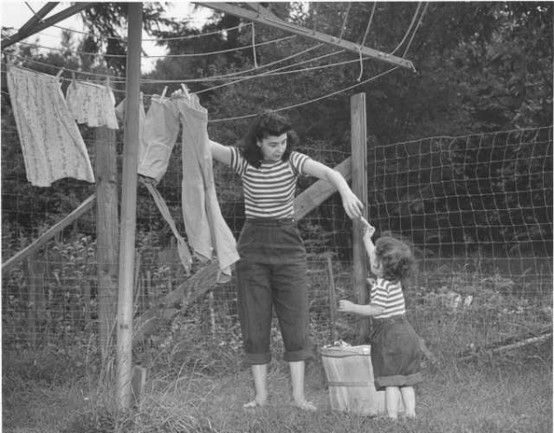 Mother’s Day is a celebration and honoring of every mother’s sacrifice, generosity, and care for us. At SWMW Law, honoring mothers includes remembering how many of them have been victims of take-home asbestos exposure and continuing to advocate for mothers who have suffered the harmful and often deadly effects of asbestos-related cancers and mesothelioma.
Mother’s Day is a celebration and honoring of every mother’s sacrifice, generosity, and care for us. At SWMW Law, honoring mothers includes remembering how many of them have been victims of take-home asbestos exposure and continuing to advocate for mothers who have suffered the harmful and often deadly effects of asbestos-related cancers and mesothelioma.
Bringing the Dangers of Asbestos Home
Throughout the last century, occupations that were predominantly filled by men—bricklayers, pipefitters, homebuilders, coal miners, and more—often put workers at high risk for direct asbestos exposure. Once a valued building material for its many desirable qualities like heat-resistance and strength, we now know that asbestos is a toxic substance that damages tissues and causes cancers. Sometimes symptoms of asbestos-related diseases show up only decades after the actual exposure, but the illnesses they inflict are often devastating and incurable.
Workers who showed up diligently every day were either unaware that asbestos was in the materials they handled, or they had that information withheld from them by corporations more interested in cost savings than worker safety. Over the course of many years, the tiny fibers released when materials containing asbestos were cut, installed, renovated, or otherwise handled, lodged into these workers’ skin, eyes, lungs, and organs, causing diseases like asbestos lung cancer and mesothelioma.
But the damage didn’t end there. Secondary asbestos exposure has caused irreparable harm to individuals who never worked directly with asbestos materials. Those deadly asbestos fibers would find their way to nearby workers, school children, neighborhood residents, and workers’ families at home.
Take-home asbestos exposure is one of the most insidious kinds of secondary exposure, affecting millions of workers’ spouses, children, extended family, and neighbors. Asbestos fibers carried home from work sites on clothing, hair, skin, tools, often because companies neglected to provide full information about their dangers or ensure workers followed proper hygiene practices.
For decades, take-home exposure hit women hardest, as gender roles often meant they laundered their husbands’ work clothes, cleaned their work shoes, and washed food containers that had all been on exposed work sites. Women and mothers were unknowingly put in direct contact with items often covered in asbestos fibers. Years of this kind of regular contact meant heightened risks of asbestos lung cancer or mesothelioma, simply from performing household duties. Even worse, asbestos fibers became lodged in household furniture, carpets, linens, and towels, sometimes for decades. Living in and cleaning those areas furthered these women’s exposure.
Although we more often hear about men developing mesothelioma, women are the primary victims of diseases related to take-home asbestos exposure. The National Institutes of Health has stated in an article titled, “Domestic Asbestos Exposure,” that inhaling asbestos as a result of “living with and handling the clothing of workers directly exposed to asbestos has been established as a possible contributor to disease.” One study highlighted three women—a mother, a wife, and a daughter, who developed pleural mesothelioma from laundering asbestos-covered clothing. Another study in the late 90s showed that over half of women diagnosed with mesothelioma were victims of take-home exposure.
There is No Safe Level of Exposure to Asbestos
Despite being a known carcinogen, with definitive evidence that asbestos exposure can cause lung cancer and mesothelioma, the U.S. has failed to impose a full ban of asbestos, putting families and workers at risk to this day.
From homes, workplaces, and schools, in addition to the asbestos contained in thousands of products sold in the U.S, many people have been and continue to be exposed to asbestos. Among the common items workers and their families may have handled are sheetrock, plaster, fertilizer, hair dryers, cigarettes, and talcum powder. Adding to that the quantities of asbestos fibers carried home from work sites, we begin to truly measure to risks and harm mothers have endured over the years.
There is no safe exposure level to asbestos. Even the smallest amount of exposure increases the chances of developing asbestos lung cancer and mesothelioma.
Documented cases of secondary asbestos exposure have existed since the 1940s. Corporations have a responsibility to inform and warn their employees handling items containing asbestos. When they fail to protect worker health and safety, they are also causing harm and risk to their families. And the Illinois Supreme Court ruled in 2012 that employers are obligated to warn workers and their families about take-home asbestos exposure.
What Can You Do?
If you or your loved one has been exposed to asbestos, whether through direct contact or secondary exposure, there are steps you can take to ensure your health, safety, and protection of rights. First, understand the risks and your rights. A great deal of asbestos research and information is available from the Asbestos Disease Awareness Organization. Also, practice safety precautions to avoid any further exposure in or around your home. A certified asbestos professional can help you with cleaning and mitigation strategies in your home. Finally, get a consultation from proven and experienced asbestos attorneys if you think you need legal assistance.

